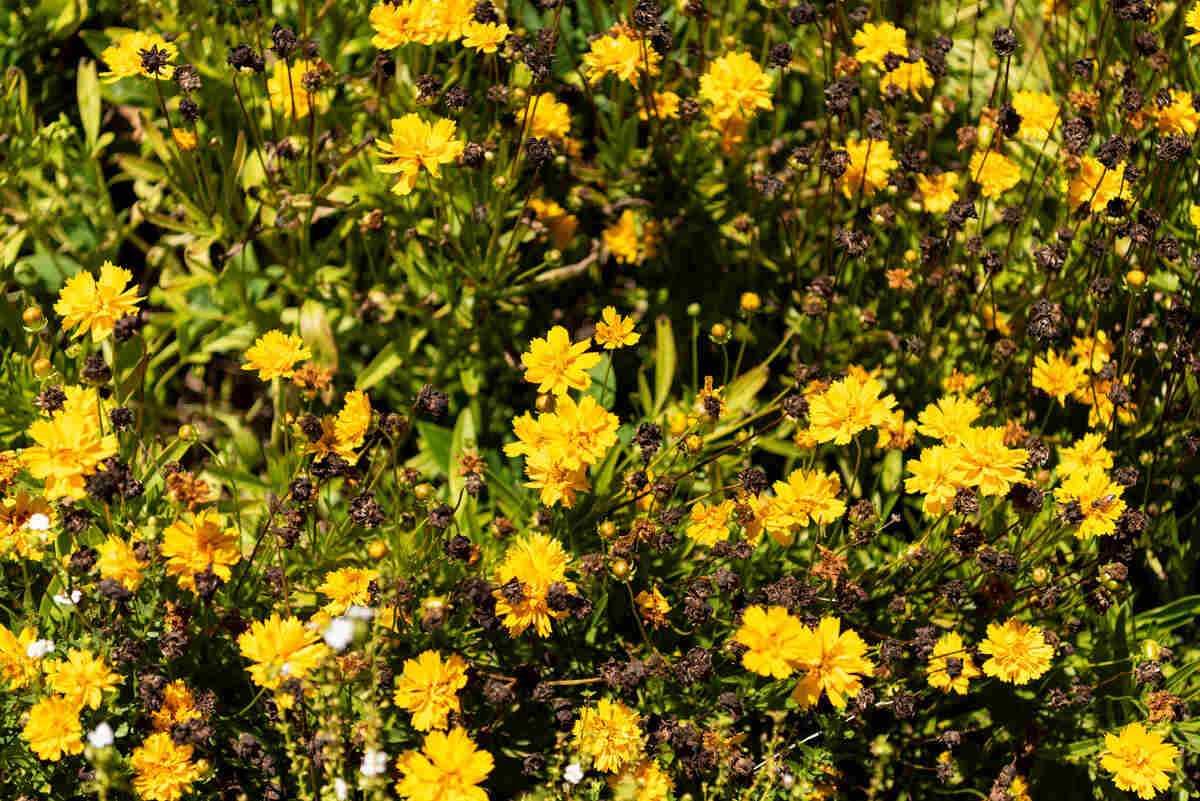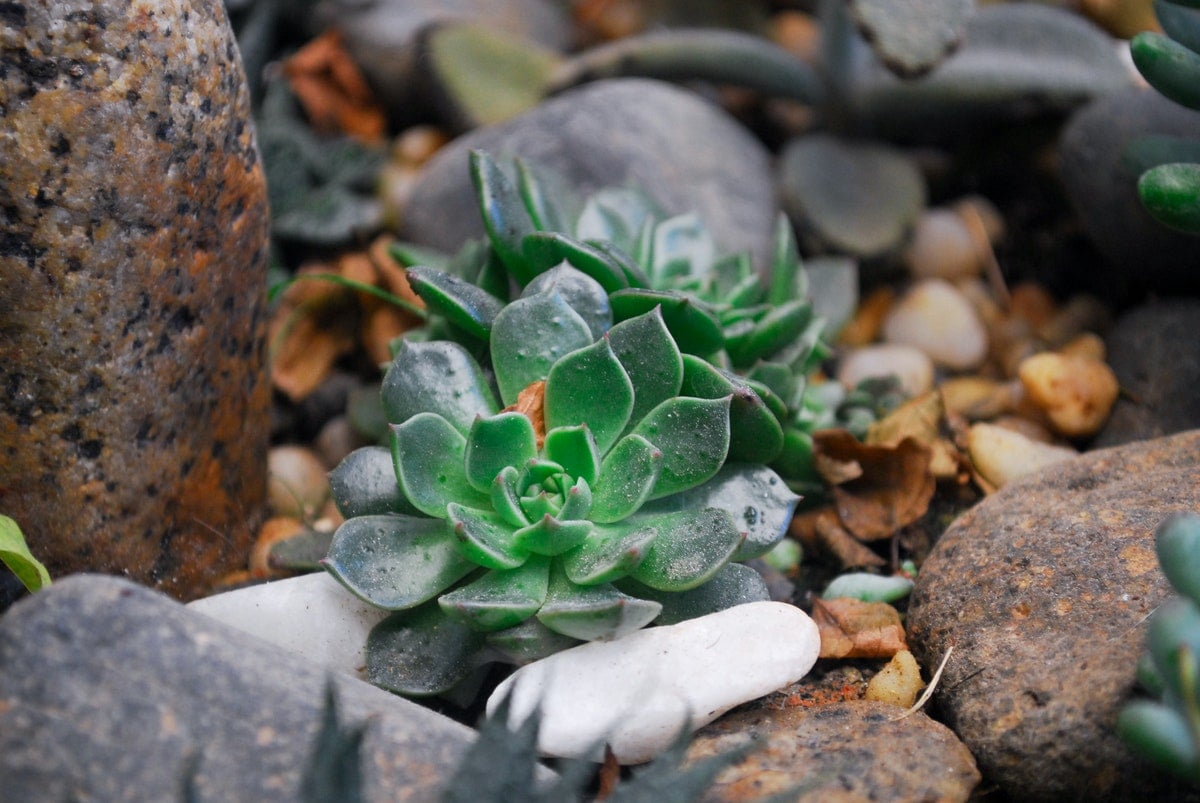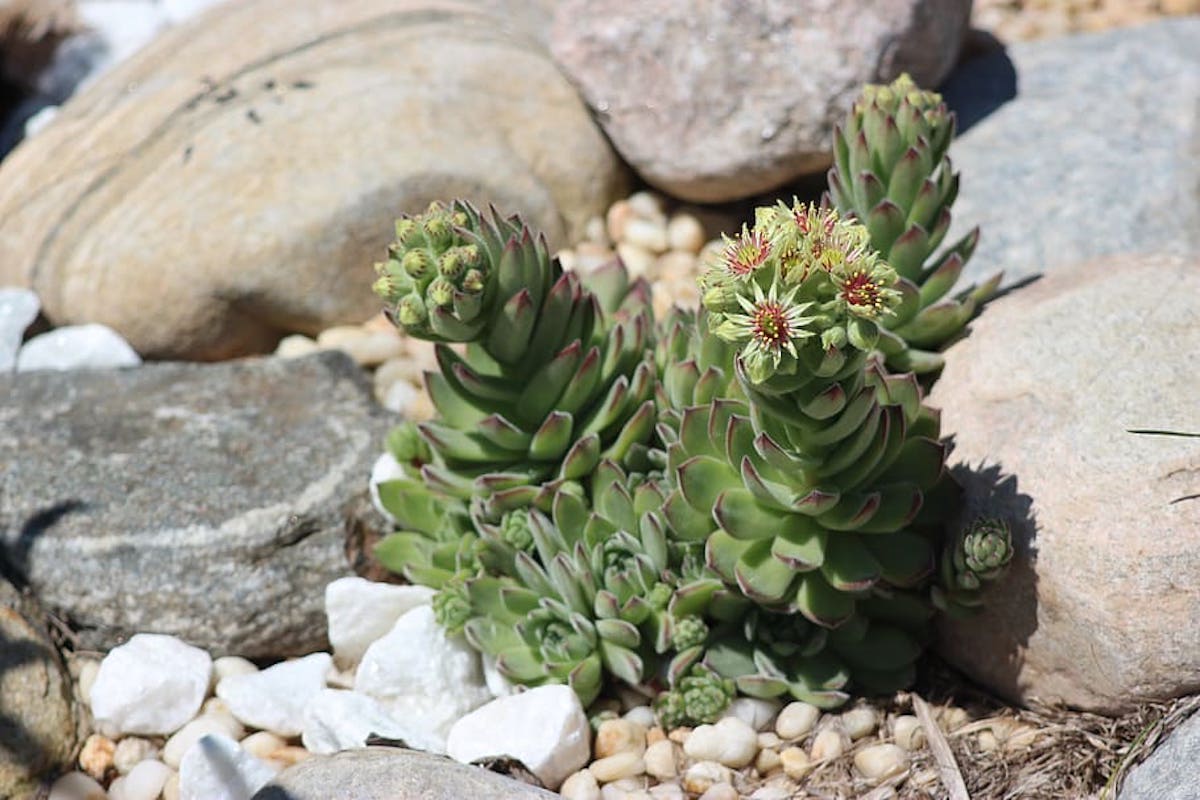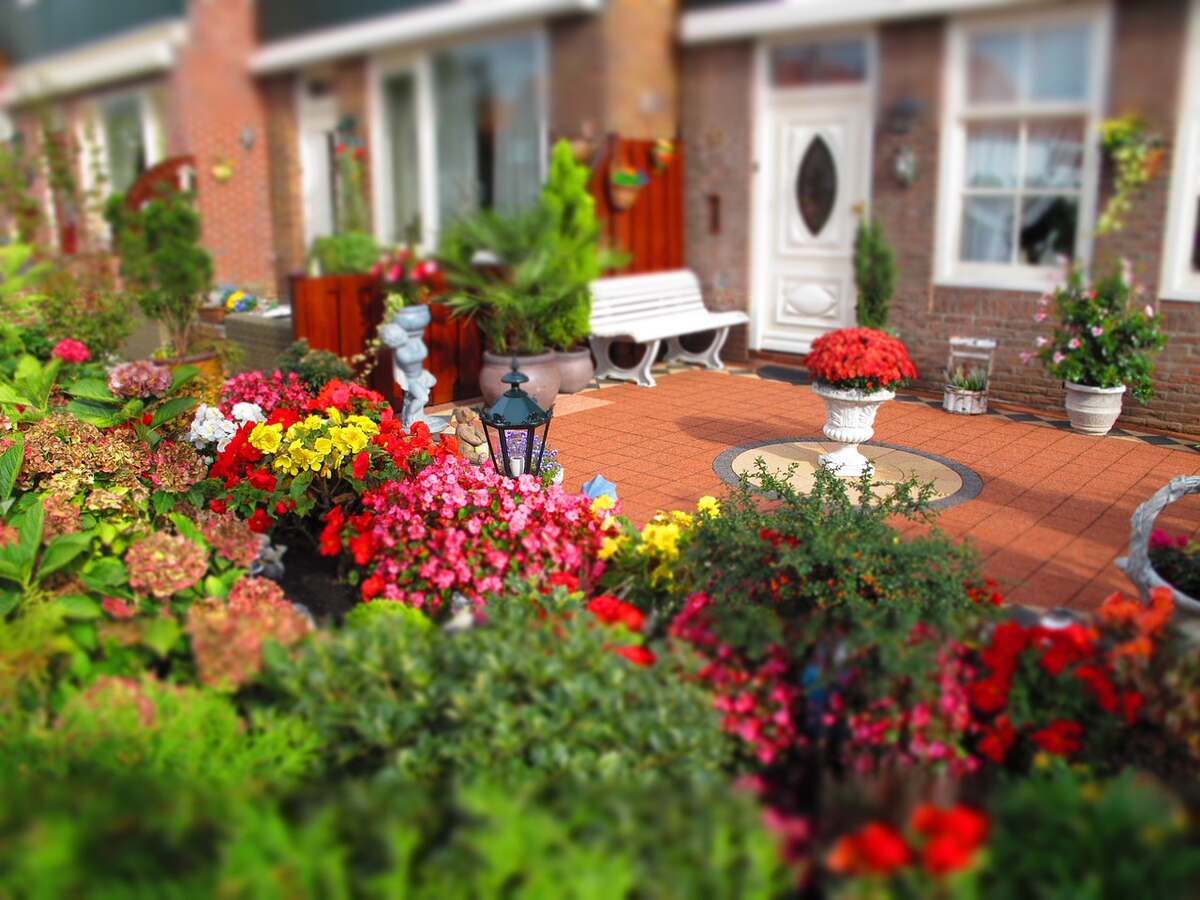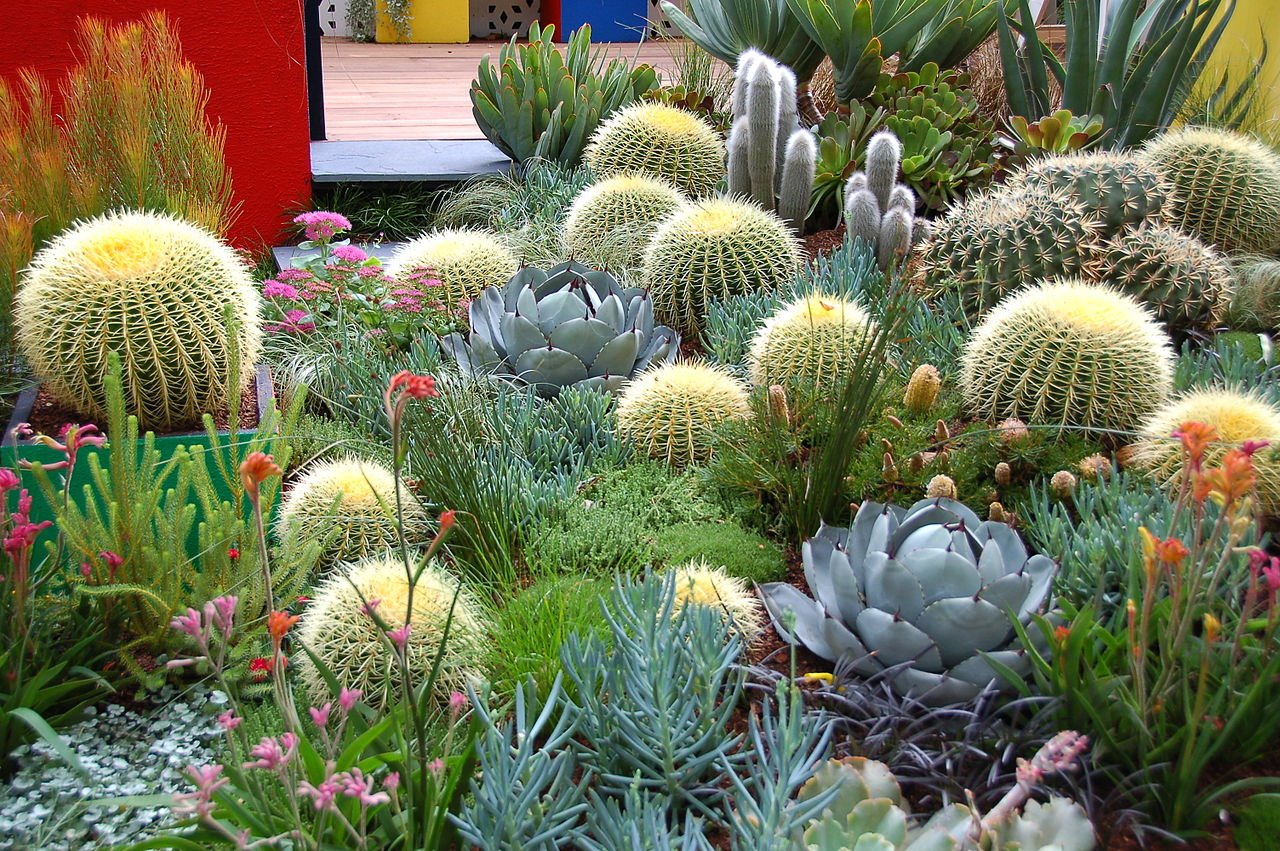
Roses aren’t the only plants with sharp thorns and beautiful flowers. Cactus plants have some of the most attractive flowers you could want in your garden.
Landscaping with cactus is more than a trendy landscape design. From succulents to agave, cactuses come in all sizes, shapes, and colors. These low-maintenance, drought-tolerant plants can save you time and water, too.
If you’re thinking about adding cactus plants to your landscape, here are 11 ideas for landscaping with cactuses.
11 Ways to Add Cactus to Your Landscaping
1. Add flowering cactus plants to your gardens
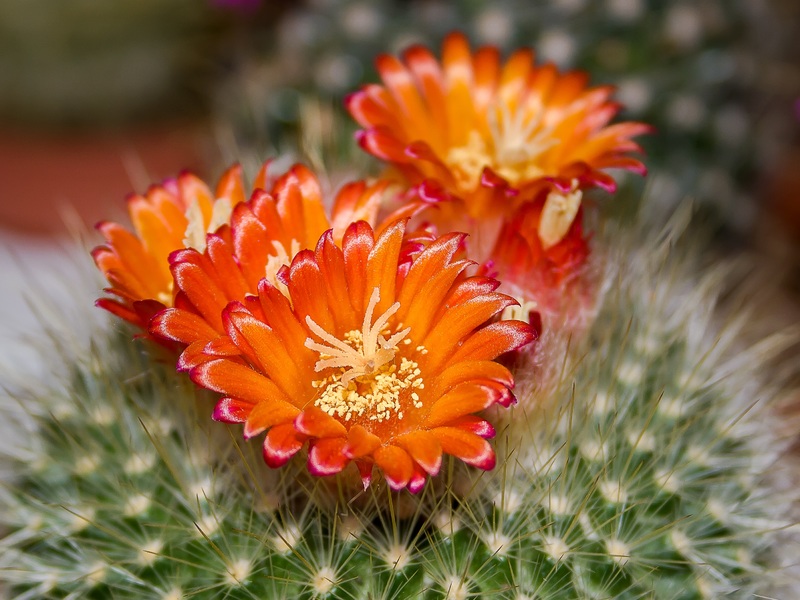
Not all cactus plants bloom, but some of them produce colorful flowers for weeks at a time in the right conditions. The right cactus can be a colorful centerpiece for your flower bed.
Flowering cactus varieties
- Star cactus (Astrophytum): Produces yellow or white flowers
- Christmas cactus (Schlumbergera: Features red, pink, or orange flowers
- Mammillari: Will bloom with several tiny pink flowers
- Orchid cactus (Epiphyllum): Produces larger pink flowers
- Hedgehog cactus (Echinopsis): Has red flowers
- Ball cactus (Parodia, Brasilicactus): Features petite yellow flowers
- Prickly pear (Opuntia): This small shrub produces 3-inch red flowers as well as fruit
2. Mix your cactuses
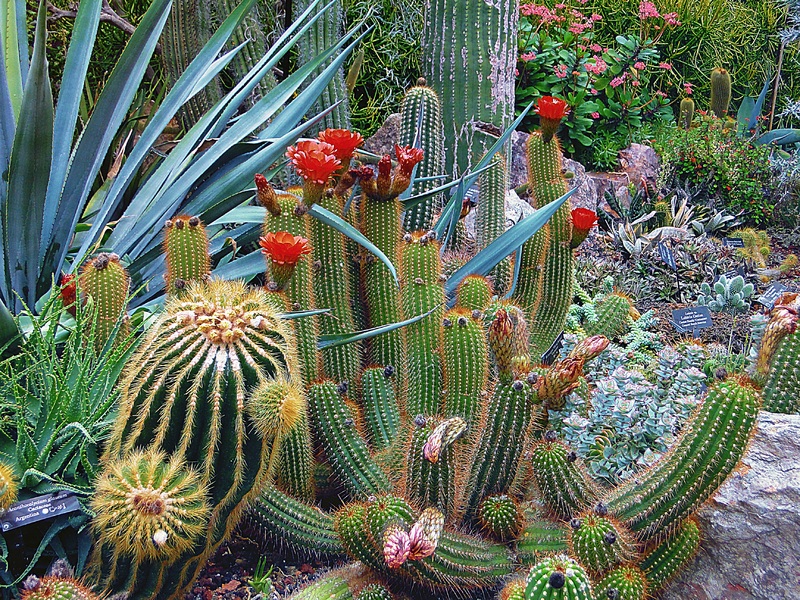
Cactuses come in 2,000 species, so why not mix it up by using a wide variety? You can use different sizes, heights, textures, and colors to create a masterpiece of garden design.
3. Use succulents to fill empty spaces
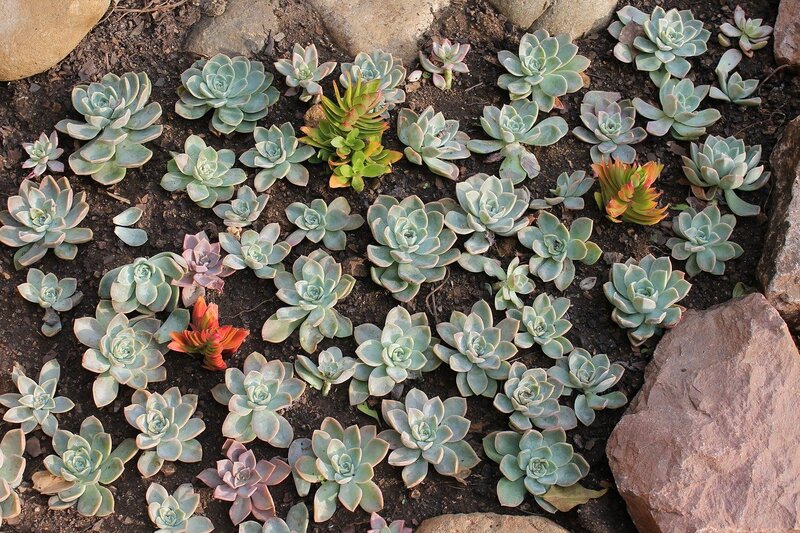
Succulents are a great, low-maintenance option for filling empty spaces or grouped together as a succulent garden for small areas of interest.
Succulents aren’t actually cactus plants, but they work well alongside cactuses because they thrive in the same low-water environments. When planted together, succulents and cactuses create a bed of attractive companion plants that need little care.
4. Go big with agave
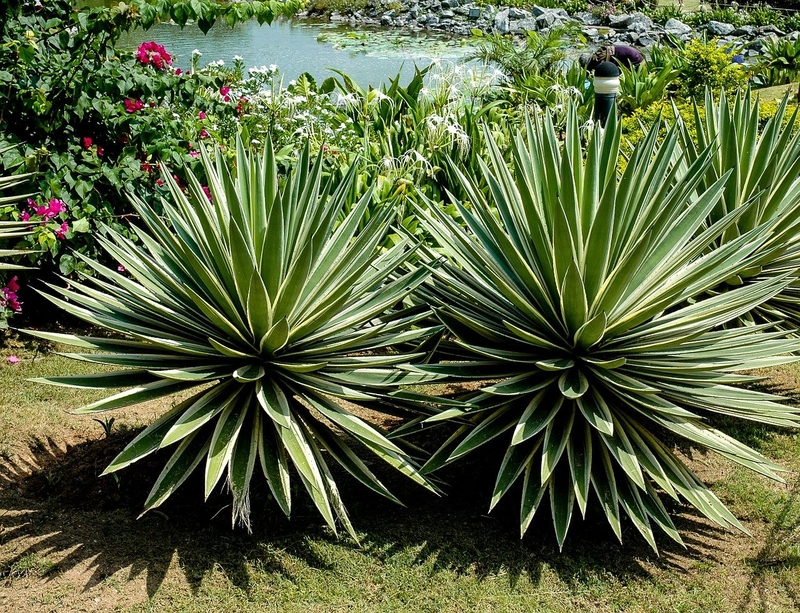
Agave plants produce a big, wide bundle of long, spiny “leaves” that take up a lot of space. They make a great centerpiece for beds of native plants or an interesting attraction near a mailbox or doorway.
5. Round things out with barrel cactuses
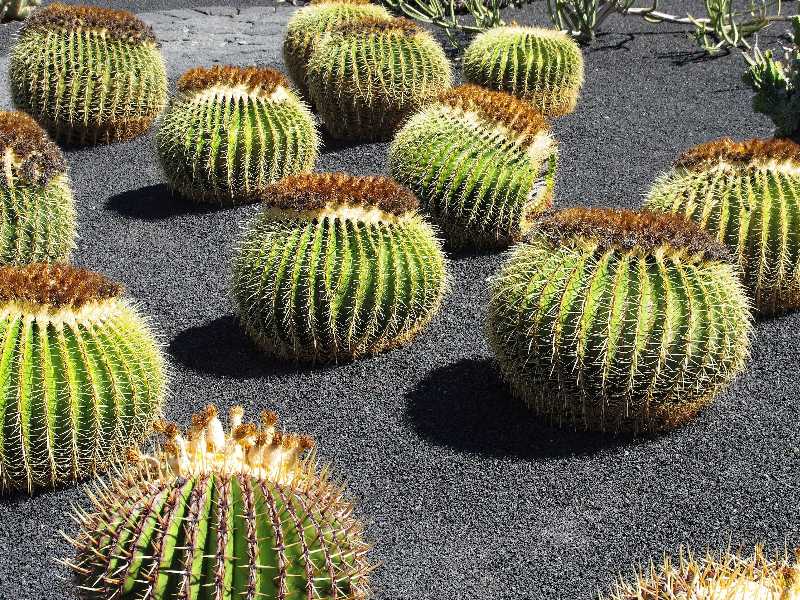
Barrel cactus is another large showstopper on its own, but it also works well when you plant smaller ones in bunches. You can line up these cactuses along a walkway or use their golden barrels along curves to create visual interest.
6. Add a little (or a lot of) aloe
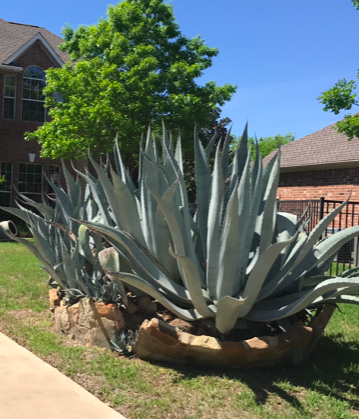
Aloe is a fleshy green succulent that produces broad, spiny leaves. Touted for its medicinal qualities, aloe is commonly used in pots but can grow much larger when planted in a flower bed or rock garden.
Aloe plants are extremely resilient and need very little much maintenance. Dog owners beware: Aloe is toxic to animals.
7. Add some color to your rock garden
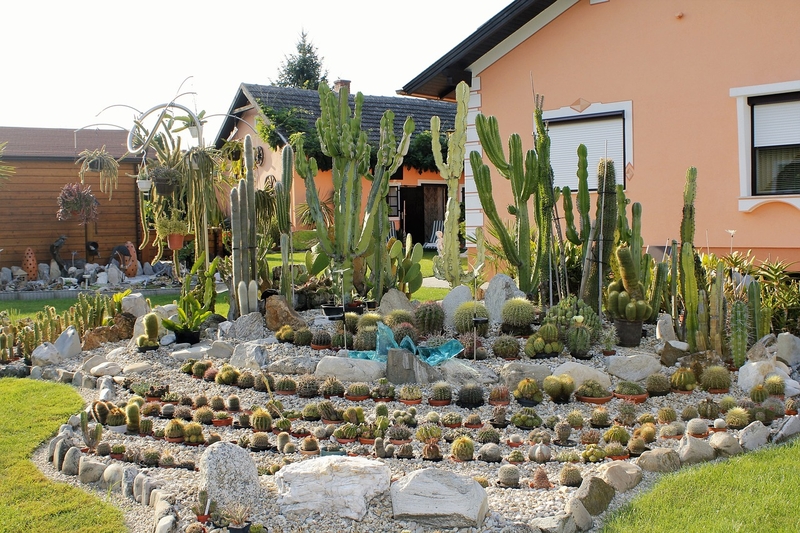
Rock gardens are a popular, low-maintenance alternative to messy and cumbersome flower beds. Cactuses are great additions because they can handle the lower moisture levels that come with using gravel instead of soil.
So, load up your rock garden with lots of small cactuses, or plant one large one as a centerpiece among landscaping rocks.
8. Swap bushes for prickly pear cactus

The prickly pear cactus grows in large, wide bunches that can work well in place of bushes. They accomplish the same goal and have the added benefit of producing a colorful fruit.
In arid climates like Arizona, this type of desert landscaping is commonplace. In front yards outside of the desert, a large prickly pear cactus will make for an interesting change of pace.
Note: Just don’t pick the aptly named prickly pear fruit with your bare hands. You have been warned.
9. Level up your cactus garden with yucca
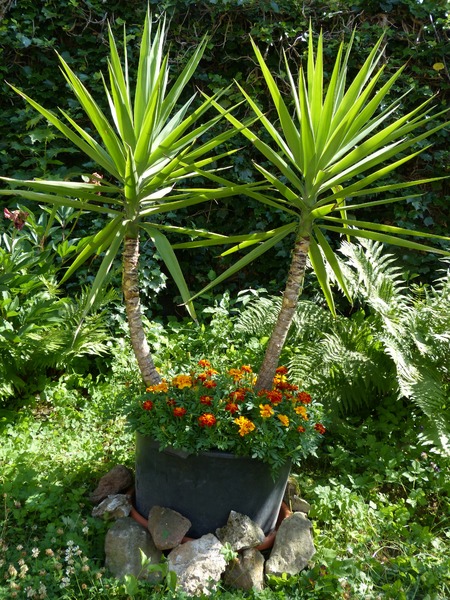
The yucca has long leaves that bunch at the top of a long, skinny trunk. Its height brings a different visual than your typical cactus plant and brings a nice variety to your landscape design.
Yucca’s long trunk also leaves plenty of room for colorful accent plants at its base.
10. Go vertical with columnar cactuses
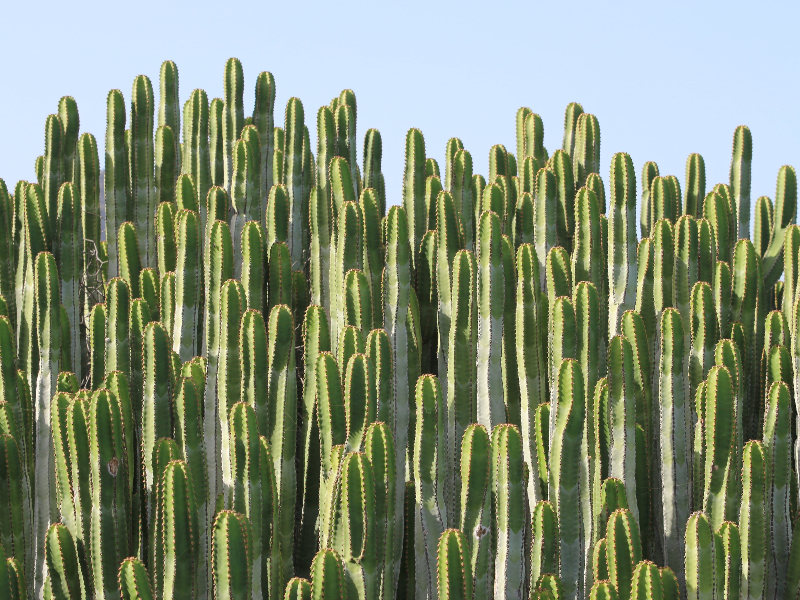
Columnar cactus varieties, such as cereus and euphorbia, grow very tall. These cactuses bring a splash of color to an otherwise bare exterior wall or make for a great backdrop to a cactus garden.
Columnar cactuses look great when evenly lined up in fence-like rows or clustered together in spots throughout a xeriscape garden.
11. Try potted cactuses for creative additions
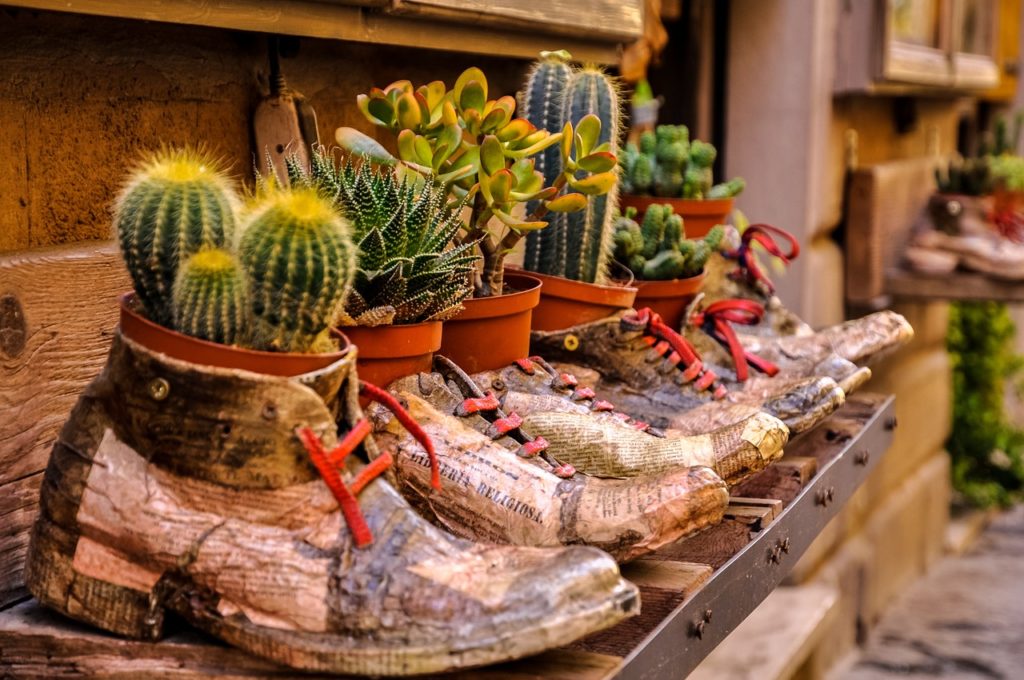
Cactus thrives when planted in pots. Using pots allows you to control the size of your cactuses, make sure they’re getting the nutrients they need, and easily maintain them when needed.
Potting your cactus also allows you to get creative with how you arrange them in your landscape. Use interesting pots or put them in fun DIY planters like an old recycled wheelbarrow or wooden crate.
FAQs about Landscaping with Cactus
Will a cactus survive the winter outdoors?
Certain varieties of cactus, such as the Eastern prickly pear, hedgehog cactus, and escobaria, thrive in the cold. Some can handle temperatures as low as -35 degrees.
The majority of cactuses, though, prefer temperatures between 45 and 85 degrees. It’s not the snow that damages the plant, but rather harsh winds.
Can you mulch around a cactus?
Because cactuses have shallow root systems, mulch can trap in moisture and heat, causing damage to your plants. It’s better to use gravel as a mulch substitute in a cactus landscape.
Do you need special soil for cactus?
Yes, cactuses should be planted in soil that is specially designed for them. You can find cactus soil at your local garden center or online.
Where should I put my cactus?
Full sun is best for many cactus plants, but some varieties prefer shade. Do your research or consult a landscape designer when planning your cactus or succulent garden.
Can a cactus get too much sun?
Most cactus plants love sunlight, but too much heat can cause sunburn. This type of sun damage on your cactus is permanent, but it is usually minor and can be trimmed away.
When to Call a Landscaping Professional
If handling a spiky cactus doesn’t sound like your idea of a relaxing weekend in the garden, call a landscaping professional near you for help designing and installing the perfect cactus garden.
A pro will know exactly what soil to use, where to place your cactuses, and what varieties will work best in your yard.
The help of a landscaping professional could mean the difference between a hand full of spines and a beautiful cactus garden.
Ask The Experts



What factors are most important to consider when landscaping with cactuses?
A few of the most important factors to consider when selecting cacti for landscaping are hardiness, aspect, soil conditions, bloom time, and overall aesthetic of the plant. Make sure that the cactus you are interested in is hardy to your USDA hardiness zone.
Cacti, in general, do best when they are in a south or southwest aspect in the garden and have well drained soils. Most gardeners prefer cacti that are long blooming or have specific bloom timeframes, so it is worth looking at the bloom times of cacti before selecting them.
Finally, it is a good idea to look up the species of interest to see if they fit your garden style and are appealing year round – some cacti blush red/purple in the winter or have ornamental fruit.
What resources should you use when choosing which cactuses to plant?
The Biota of North America (bonap.net) list over 40 genera (and MANY species!) of cacti in the US. With that much diversity, there are many options for gardeners to chose from. Therefore, it is ideal to seek out local resources and books on which species of cacti thrive in your area.
Most states have native plants societies that list cacti native to that area and local garden centers will recommend appropriate garden selections.
How important is using local cactus plants?
Choosing native cacti benefits the gardener and pollinators alike. Gardeners will not have to amend their soils or water too often after establishment if they choose cacti that are native to their area.
Local butterflies and native bees will benefit from having native cacti blossoms to feed on.
How often should you fertilize cactus? How often should you change soil?
Cacti are relatively heavy feeders but specific recommendations depend on the species of cactus. For example, the fertilizer requirements for a holiday cactus in a container is very different from a prickly pear in a garden.
Most native cacti planted in their native region do not require supplemental fertilizer. Only cacti that are grown in containers may need to be repotted to refresh the soil. If that is the case, it is the most ideal to use well drained succulent substrate.
How long can cactus survive?
Cacti are long lived perennials or woodies that can live for decades if correctly managed.

What factors are most important to consider when landscaping with cactuses?
I would say for landscaping with cacti that will be permanent in the landscape, it is important to make sure that you’ve got the right microclimate for the species that you’re trying to grow. Typically sunny and dry, so south-facing and under roof overhangs with dry soils for us in the southeast US.
Next would be to choose cacti that are native to the areas nearby the site, and if using non-native species to consider container-growing the plants so that they can be moved (indoors or to a drier location) if the climate isn’t suitable.
You can find native species in the Cactaceae family by searching in eFlora. There are a bunch of species of cacti found in North America, and you can search for which species are similar to those native to your area at NatureServe by searching with the term cacti or similar. The results describe locations where plant communities commonly have cacti as a common plant.
What resources should you use when choosing which cactuses to plant?
Sorry, see above. Also check for local enthusiast groups that will have tried some in the landscape and in containers. Cacti collectors and amateur growers are fairly common.
How important is using local cactus plants?
I think that it is very important, especially if you want to have them be a permanent part of the outdoor landscape. For example, in the southeastern US, we can easily grow prickly-pear types that will thrive year-round in the landscape, but that wouldn’t be the case for species that come from the desert SW US if I was trying to grow them in the southeast.
How often should you fertilize cactus? How often should you change soil?
Seldom fertilize, and at lower rates than you would other plants, like those that might need more nutrients in the landscape (flowerbed types of plants that are very needy). If you match the cactus species to the local climate, you shouldn’t have to provide very much care at all, other than to spruce up if parts of your segmented cacti fall from the main group and you don’t like that look. And the barrel-type cacti would obviously never have parts break off like the segmented types would.
You would want to carefully put a container-grown barrel cactus into a larger pot if necessary, as its radius slowly expands. Segmented types you can let go in an appropriately-sized pot and leave for a very long time, because when it gets too big the furthest segments tend to break off and then you can start those segments in new pots.
How long can cactus survive?
Forever. No seriously, a really long time because when a part of a segmented cacti falls to the ground it grows next to the “mother” plant and so on and so on. The barrel types and saguaros outlive their owners easily.
Main Photo Credit: Chris Phutully from Australia / CC BY 2.0

